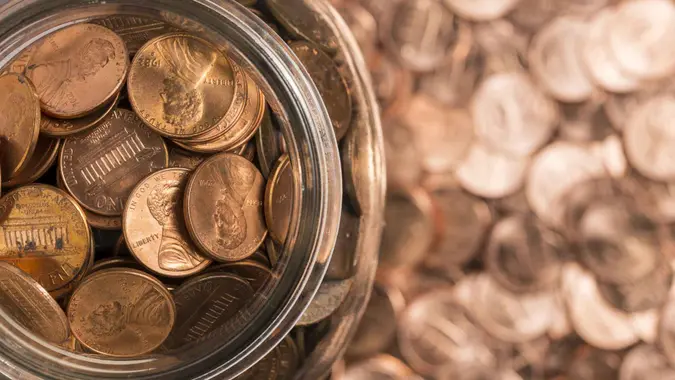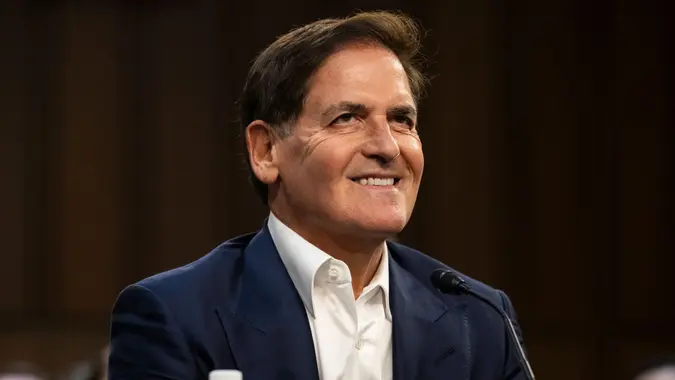Here’s Why Experts Say High Interest Rates Will Be Around For a Long Time — And It’s Not Entirely Consumer Spending

Commitment to Our Readers
GOBankingRates' editorial team is committed to bringing you unbiased reviews and information. We use data-driven methodologies to evaluate financial products and services - our reviews and ratings are not influenced by advertisers. You can read more about our editorial guidelines and our products and services review methodology.

20 Years
Helping You Live Richer

Reviewed
by Experts

Trusted by
Millions of Readers
A mere few days before the Federal Reserve’s last two-day Federal Open Market Committee (FOMC) meeting, some experts argued that high interest rates will be around for a long time.
At its last meeting (which began in late October), the Fed paused its interest rate hikes for the second consecutive time, following 11 increases since March 22. The decision was viewed by many as a “wait and see” approach.
The Fed, in another unanimous decision, said at the time that it would maintain its funds rate at a range of 5.25% to 5.5%, a 22-year high.
And now, Kenneth Rogoff — a former chief economist at the International Monetary Fund and professor of economics and public policy at Harvard University — suggested that even if inflation declines, interest rates will likely remain high. In fact, Rogoff indicated they will remain high for the next decade — higher than they were in the decade following the 2008 financial crisis, per MarketWatch.
“This reflects a variety of factors, including soaring debt levels, deglobalization, increased defense spending, the green transition, populist demands for income redistribution and persistent inflation,” Rogoff wrote.
According to Rogoff, even demographic shifts, often cited as a rationale for perpetually low interest rates, may affect developed countries differently as they increase spending to support rapidly aging populations.
Other Experts Agree: Relatively High Interest Rates Are Here To Stay
For instance, William J. Luther, director of the American Institute for Economic Research’s Sound Money Project and an associate professor of economics at Florida Atlantic University, said the current landscape presents both good news and bad news.
“The good news is that interest rates are unlikely to remain as high as they are now for much longer,” he said. “With inflation returning to normal, the Federal Reserve will likely begin lowering its target rate in the first half of 2024,” he noted.
The bad news is that rates are unlikely to return to the low levels enjoyed in the decade prior to the pandemic, he suggested.
“An aging population reduces the supply of credit, while a much-expanded public sector increases demand. Interest rates will remain high as a consequence,” added Luther.
Another factor coming into play, according to Rogoff, is that in the U.S., the commercial real estate sector’s vulnerabilities, coupled with increased borrowing, could trigger another wave of inflation.
Finally, although expectations for the Dec. 13 rate announcement are that the Fed remains on hold, the statement and the so-called “dot plot” (the projections) could be more hawkish than expected following the stronger than anticipated payroll report — at least according to Quincy Krosby, chief global strategist for LPL Financial.
Krosby argued that the Fed has been stymied by better than expected data releases — but as long as inflation continues to edge lower, the Fed will likely keep rates on hold. Yet, he noted that the latest jobs report is a harbinger of continued consumer spending, and “the Fed may have to issue a considerably more hawkish message and telegraph that they still cannot declare victory on their campaign to quell inflation.”
More From GOBankingRates
 Written by
Written by  Edited by
Edited by 

























